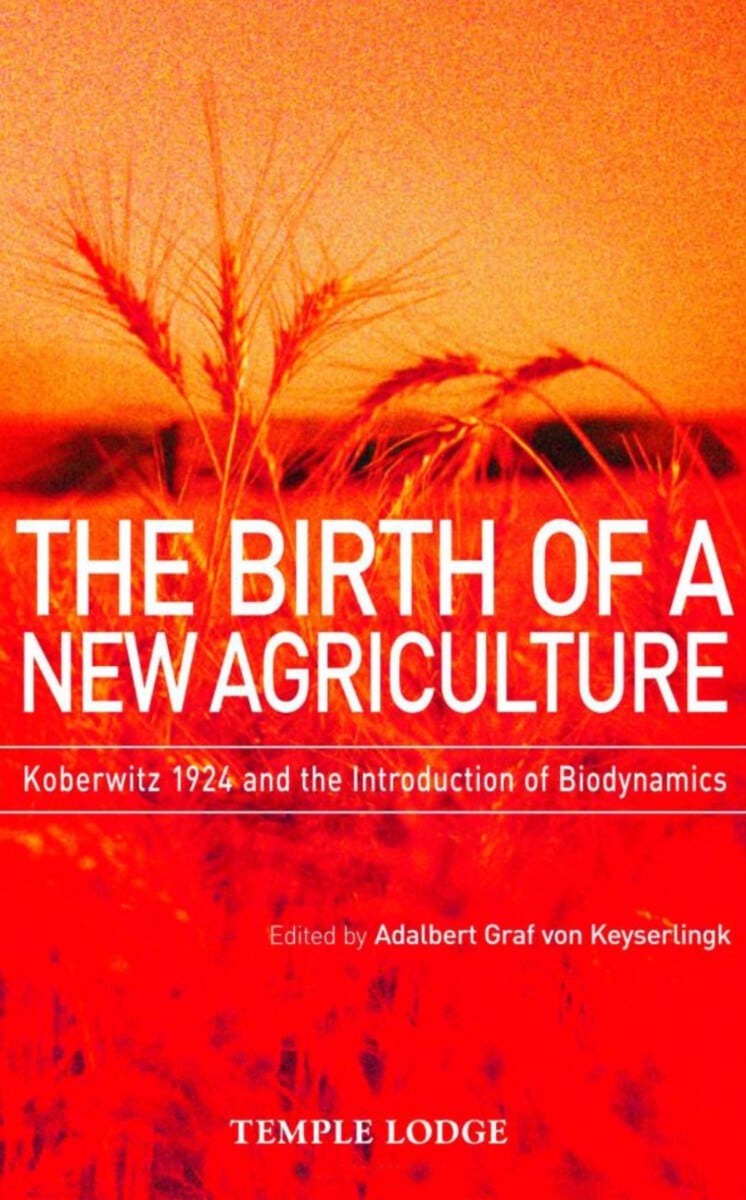The Birth of a New Agriculture: Koberwitz 1924 and the Introduction of Biodynamics
In 1924 at Koberwitz, the estate of Count and Countess Keyserlingk, Rudolf Steiner gave a key course of lectures on agriculture. At a time when industrial methods were being introduced into farming, Steiner had a radically different, evolutionary vision. Based on a revitalized relationship with nature, his approach encompassed knowledge of the cosmos, the elemental world and the Earth, and utilized special planting methods and preparations. Today biodynamic agriculture is widely valued and used around the world.
In addition to the lively and entertaining accounts of the agriculture course held at Koberwitz, this extraordinary book features Countess Keyserlingk’s memories of her meetings with Rudolf Steiner, who told the Countess her form of consciousness would be usual “in the third millennium.” Her reminiscences reflect this uncommon quality. Also included are essays by the editor that incorporate rare material, including communications received by Countess Keyserlingk after Steiner’s death.
This book will be of interest to students of biodynamics as well as those interested in how Rudolf Steiner worked to develop Anthroposophy. It is compiled and edited by Adalbert Graf von Keyserlingk, the son of the Count and Countess who hosted the Koberwitz conference.
About the Author
Rudolf Steiner (1861–1925) was born in the small village of Kraljevec, Austro-Hungarian Empire (now in Croatia), where he grew up (see right). As a young man, he lived in Weimar and Berlin, where he became a well-published scientific, literary, and philosophical scholar, known especially for his work with Goethe’s scientific writings. At the beginning of the twentieth century, he began to develop his early philosophical principles into an approach to systematic research into psychological and spiritual phenomena. Formally beginning his spiritual teaching career under the auspices of the Theosophical Society, Steiner came to use the term Anthroposophy (and spiritual science) for his philosophy, spiritual research, and findings. The influence of Steiner’s multifaceted genius has led to innovative and holistic approaches in medicine, various therapies, philosophy, religious renewal, Waldorf education, education for special needs, threefold economics, biodynamic agriculture, Goethean science, architecture, and the arts of drama, speech, and eurythmy. In 1924, Rudolf Steiner founded the General Anthroposophical Society, which today has branches throughout the world. He died in Dornach, Switzerland.
Rudolf Meyer (1896–1985) wrote more than thirty book on education, religion, and mythology.











Reviews
There are no reviews yet